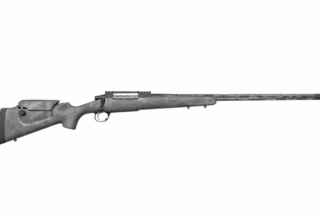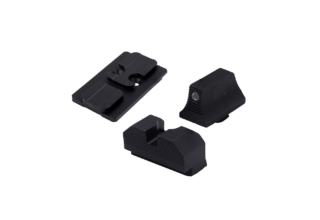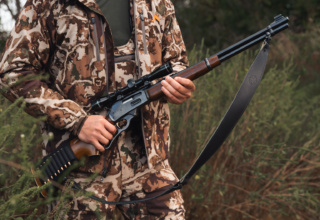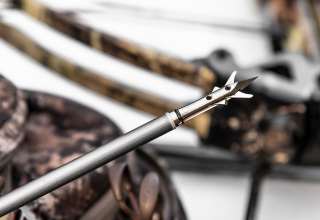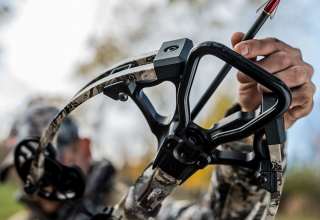Picking the “perfect” crossbow optic isn’t as straightforward or easy as you might think, as there’s a lot to consider. Here’s what you need to know to make an informed purchase.
The crossbow market differs from others in that all-inclusive “packages” dominate, and for good reason, too. Rather than having to piecemeal his or her way to a range- and field-capable crossbow, the bundler gets all of the items necessary for practice and hunting (except broadheads) with one buy. Included among the many articles is generally found some sort of optic for sighting; except for some bowfishing-specific and low-cost models, seldom are modern crossbows equipped with open sights. But, what if you’re displeased with the pre-packaged optic, the crossbow didn’t come with one, or it no longer works (for one of myriad reasons)? Below is a primer for purchasing a new, improved, or first crossbow optic.
Traditional-Type Scopes

The traditional-type optic rules the marketplace. Not only do these crossbow scopes resemble and function similarly to their firearm-mounted brethren, aiming is also by way of a crosshair (or multiple crosshairs and/or geometric shapes, such as triangles, or some combination thereof). Scopes with multiple aiming points (i.e. trajectory compensating reticles), such as TRUGLO’s TRU-BRITE XTREME, are preferable to those with a single one because you’re provided with exact holds at various ranges. Why? Despite the high velocities attained by modern crossbows, bolts still drop considerably—especially at the crossbow’s furthest practical ranges.
Key to accurate aiming points, however, is using a scope that enables you to match your crossbow’s velocity to a specific, preprogrammed trajectory setting on the second-focal-plane scope. Found on the magnification band, this feature provides precise aiming points for multiple ranges—most go from 20 yds. to 50 yds.—based upon the trajectory of your setup (i.e. crossbow, bolt, and tip/broadhead). For this reason, using published velocities by manufacturers isn’t “good enough”; you must chronograph the setup that you intend to use afield. It takes only minutes, and chronographs today are relatively inexpensive. I prefer Competition Electronics chronographs, which retail for around $100 and can calculate the velocities of everything from bows to high-velocity rifles.

Once set, you’re typically ready to shoot (not necessarily hunt) out to the scope’s maximum range without guessing holdovers. Verify the holds, though. Do not change the setting or the aiming points won’t be accurate. Too, if you change your setup in a way that affects the velocity you must chronograph it again. To eliminate confusion, some such optics have the distances (i.e 20, 30, 40, 50) listed beside the aiming points, though this isn’t necessary.
Your crossbow scope should be no less feature-filled than a riflescope. For example, it should be at least water resistant, though waterproof is preferred, as well as shock resistant and fog proof. Moreover, demand that it have fully multi-coated lenses and consistent, repeatable “clicks.” It’s also nice to have an illuminated reticle, particularly if you’re hunting from a ground blind during low-light conditions or hogs at night (where legal). These are usually rheostat controlled and have multiple colors from which to choose.
[quotes quotes_style=”bquotes” quotes_pos=”center”]”Surely you’re wondering if your riflescope can pull double-duty on your crossbow. To this I must say ‘no.’”[/quotes]
Standard riflescopes typically have a single aiming point, which would mandate zeroing and firing at a single distance. Do you want to be that limited in the field? Since you’re relying on hemorrhaging to kill an animal, not the tremendous terminal ballistics of a high-velocity rifle bullet, precision is key. Therefore, relying on “holding on hair” or some other imprecise compensating method can be viewed as unethical. Even riflescopes with trajectory compensating reticles wouldn’t necessarily correlate to a crossbow’s trajectories. Stick to crossbow scopes.
Dot- and Reflex-Style Optics

In general, dot- and reflex-style optics have grown in popularity—especially in the shooting sports. But, they’re not as popular for crossbows … yet. Unlike traditional-type crossbow scopes, the aforementioned optics are generally both lightweight and unobtrusive. For example, TRUGLO’s 1X 34 mm DUAL-COLOR red-dot sight weighs a trivial 5.5 ozs., and the 1X 30 mm TRITONis only 7 ozs. The TRU-BRITE XTREME scope is more than double the weight of the latter. The eye quickly focuses on the glowing aiming point, and that illumination is invaluable in compromised lighting. The only downfall is that there’s no magnification, which makes sighting at-distance more difficult than with the traditional-style scopes.
As for the reasons mentioned in the section above, single-aiming-point, dot-style sights that are meant for firearms shouldn’t be affixed to your crossbow; instead, select one that has multiple aiming points (i.e. trajectory compensating system) that get smaller as they descend. Why is this important? Remember, there’s no magnification so you don’t want an oversize dot to take longish shots. One of the best compensating systems I’ve seen on a dot-style sight is found on the TRUGLO DUAL-COLOR, as you can select from one of four speed settings to provide the correct aiming points for your crossbow. Will it be as precise as selecting the exact velocity of your crossbow? No, but it’ll be very close (unless your bow is way outside of the norm with regard to velocity). As mentioned previously, you want your dot- or reflex-style sight to be rugged and dependable.
Once you’ve selected your favored design, the only thing left to do is mount the optic and adjust it, then spend time practicing. Then, come fall, you’ll be confident to take the shot at that once-in-a-lifetime buck, bull, or bear.
- Picking the Perfect Crossbow Optic - November 10, 2016
- Ground Blind Basics: Tips for a Better Ground Blind Experience - September 8, 2016


